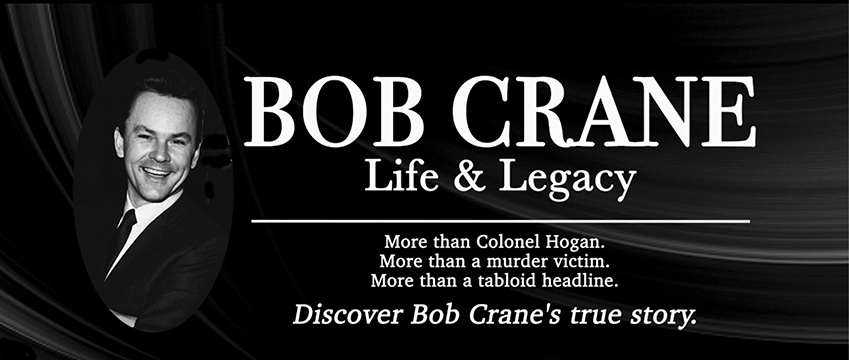 |
TV Radio Mirror / December 1963
"It's the Story of Bob Crane" |
From 1956 to 1965, KNX-CBS radio was the home of "The Bob Crane Show." On May 30, 1964 (Memorial Day Weekend), from 8:00 a.m. to 11:55 a.m., Bob Crane made his final Saturday KNX broadcast with an 8th anniversary tribute show, during which he spotlighted many of his celebrity interviews.
Bob Crane was not only a gifted and natural-born interviewer; he was one of
the premiere celebrity interviewers of his time. At KNX, he is credited with conducting more than 3,000 interviews, the majority of which were key figures in the entertainment industry. A collection of Crane's interviews, including his entire KNX 8th Anniversary Show, is available for the public to hear through the
Paley Center in either New York City or Los Angeles. Later, in 1967 and 1968, Bob donated his time with the U.S. Armed Forces Radio Network, where he conducted and recorded many more celebrity interviews for broadcast to American troops serving overseas. A great number of these historic recordings are also available to the public through the
U.S. Library of Congress in Washington, D.C. For both the Paley Center and the Library of Congress, you must listen to the recordings onsite.
Of the thousands of prominent individuals and other notables interviewed by Crane, the following represents only a mere fragment of the list: Jack Lemmon, Dick Van Dyke, Bill Cosby, Bob Hope, Bob Newhart, Jerry Lewis, Soupy Sales, Gypsy Rose Lee, George Jessel, Bette Davis, Pat Boone, The Great Coogamooga, Marilyn Monroe, Jayne Mansfield, Phyllis Diller, a chimpanzee, Charlton Heston, Danny Kaye, Gig Young, Barbra Streisand, Gene Krupa, Stephanie Powers, Richard Chamberlain, Olivia de Havilland, Eddie Cantor, George Hamilton, Otto Preminger, Keenan Wynn, Jonathan Winters, a shoeshine boy, Steve Allen, Jule Stein, Meredith and Remi Wilson, Alexander King, Arthur O'Connell, Frankie Carle, Robert Goulet, Jane Meadows, Rod Serling, Paula Prentiss, Arthur Godfrey, Carol Lawrence, John Gary, Tennessee Ernie Ford, Jaye P. Morgan, Lawrence Welk, Alan Young, Mel Torme, Roger Williams, Doris Day, Henry Mancini, Arte Shaw, Stan Kenton, Eydie Gorme, John Astin, Connie Stevens, Carl Reiner, Shelley Mann, Cesar Romero, Barbara Parkins, Mary Tyler Moore, Omar Sharif, Bobby Darin, Joe Louis, Tony Randall, Terry Thomas, Wayne Newton, Morey Amsterdam, Carl Betz, Ray Conniff, Jerry Van Dyke, Natalie Wood, Frankie Avalon, Tiny Little, Mitch Miller, Barbara Eden, Inger Stevens, Dizzy Gillespie, Allan Sherman, June Foray, Red Skelton, Andre Previn, Ronald Reagan, and Dick Clark.
In this segment, which was rebroadcast in 1962 over KNX as part of Bob Crane's 5th Anniversary Show, Pat Boone and George Jessel are interviewed by Bob together.
Bob Crane KNX Interview / George Jessel and Pat Boone (circa 1960)
Laffter, Sweet and Profane / 5th Anniversary Promotional Record
Bob Crane Show / KNX-CBS Radio
February 15, 1962













